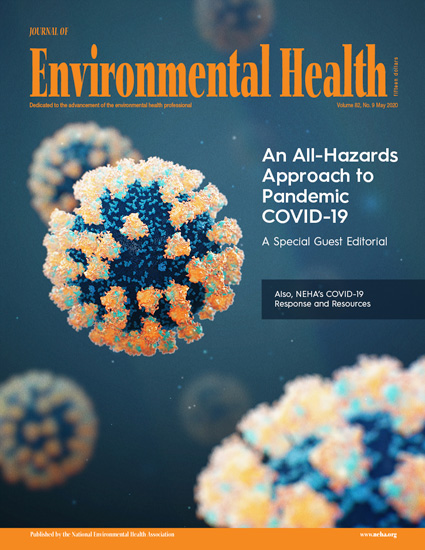Seasonal extreme temperatures and short-term fine particulate matter increases pediatric respiratory healthcare encounters in a sparsely populated region of the intermountain western United States
IF 5.3
2区 环境科学与生态学
Q1 ENVIRONMENTAL SCIENCES
引用次数: 0
Abstract
Western Montana, USA, experiences complex air pollution patterns with predominant exposure sources from summer wildfire smoke and winter wood smoke. In addition, climate change related temperatures events are becoming more extreme and expected to contribute to increases in hospital admissions for a range of health outcomes. Evaluating while accounting for these exposures (air pollution and temperature) that often occur simultaneously and may act synergistically on health is becoming more important. We explored short-term exposure to air pollution on children’s respiratory health outcomes and how extreme temperature or seasonal period modify the risk of air pollution-associated healthcare events. The main outcome measure included individual-based address located respiratory-related healthcare visits for three categories: asthma, lower respiratory tract infections (LRTI), and upper respiratory tract infections (URTI) across western Montana for ages 0–17 from 2017–2020. We used a time-stratified, case-crossover analysis with distributed lag models to identify sensitive exposure windows of fine particulate matter (PM2.5) lagged from 0 (same-day) to 14 prior-days modified by temperature or season. For asthma, increases of 1 µg/m3 in PM2.5 exposure 7–13 days prior a healthcare visit date was associated with increased odds that were magnified during median to colder temperatures and winter periods. For LRTIs, 1 µg/m3 increases during 12 days of cumulative PM2.5 with peak exposure periods between 6–12 days before healthcare visit date was associated with elevated LRTI events, also heightened in median to colder temperatures but no seasonal effect was observed. For URTIs, 1 unit increases during 13 days of cumulative PM2.5 with peak exposure periods between 4–10 days prior event date was associated with greater risk for URTIs visits that were intensified during median to hotter temperatures and spring to summer periods. Delayed, short-term exposure increases of PM2.5 were associated with elevated odds of all three pediatric respiratory healthcare visit categories in a sparsely population area of the inter-Rocky Mountains, USA. PM2.5 in colder temperatures tended to increase instances of asthma and LRTIs, while PM2.5 during hotter periods increased URTIs.季节性极端气温和短期细颗粒物增加了美国西部山间人烟稀少地区的儿科呼吸道医疗就诊率
美国蒙大拿州西部的空气污染模式十分复杂,主要的暴露源来自夏季野火烟雾和冬季木材烟雾。此外,与气候变化相关的气温事件正变得越来越极端,预计将导致因一系列健康后果而入院的人数增加。这些暴露(空气污染和气温)往往同时发生,并可能对健康产生协同作用,因此在对这些暴露进行评估的同时对其进行核算变得越来越重要。我们探讨了短期暴露于空气污染对儿童呼吸系统健康结果的影响,以及极端温度或季节性时期如何改变空气污染相关医疗事件的风险。主要结果测量包括基于个人地址的呼吸道相关医疗就诊,涉及三个类别:2017-2020 年蒙大拿州西部 0-17 岁儿童的哮喘、下呼吸道感染 (LRTI) 和上呼吸道感染 (URTI)。我们使用分布式滞后模型进行了时间分层、病例交叉分析,以确定细颗粒物(PM2.5)的敏感暴露窗口,其滞后期为 0(当天)至 14 个前一天,并根据气温或季节进行了调整。就哮喘而言,就诊日期前 7-13 天 PM2.5 暴露增加 1 µg/m3 与几率增加有关,而几率在气温中位数至较低气温和冬季期间放大。就 LRTI 而言,在就诊日期前 6-12 天的 PM2.5 暴露高峰期,12 天内 PM2.5 累积量增加 1 µg/m3 与 LRTI 事件的增加有关,在气温中位数至较低时也会增加,但未观察到季节性影响。对于尿路感染,13 天的累积 PM2.5(峰值暴露期在事件发生日期前 4-10 天之间)增加 1 个单位与尿路感染就诊风险增加有关,在中度至较热气温以及春季至夏季期间,尿路感染就诊风险增加。在美国洛克希山脉间的一个人口稀少地区,PM2.5的延迟、短期暴露增加与所有三种儿科呼吸道医疗就诊类别的几率升高有关。气温较低时的 PM2.5 往往会增加哮喘和 LRTI 的发病率,而气温较高时的 PM2.5 则会增加 URTI 的发病率。
本文章由计算机程序翻译,如有差异,请以英文原文为准。
求助全文
约1分钟内获得全文
求助全文
来源期刊

Environmental Health
环境科学-公共卫生、环境卫生与职业卫生
CiteScore
10.10
自引率
1.70%
发文量
115
审稿时长
3.0 months
期刊介绍:
Environmental Health publishes manuscripts on all aspects of environmental and occupational medicine and related studies in toxicology and epidemiology.
Environmental Health is aimed at scientists and practitioners in all areas of environmental science where human health and well-being are involved, either directly or indirectly. Environmental Health is a public health journal serving the public health community and scientists working on matters of public health interest and importance pertaining to the environment.
 求助内容:
求助内容: 应助结果提醒方式:
应助结果提醒方式:


